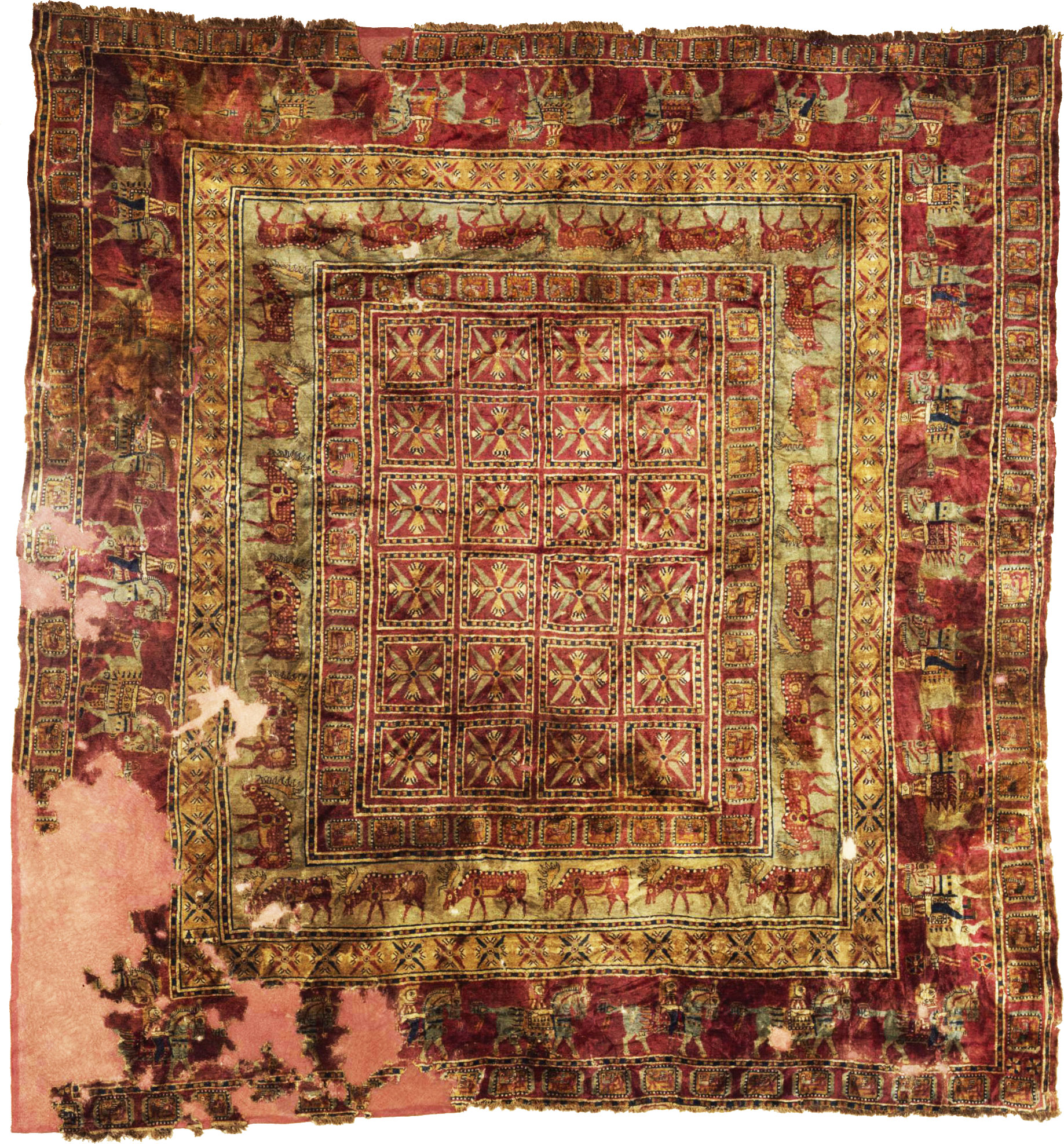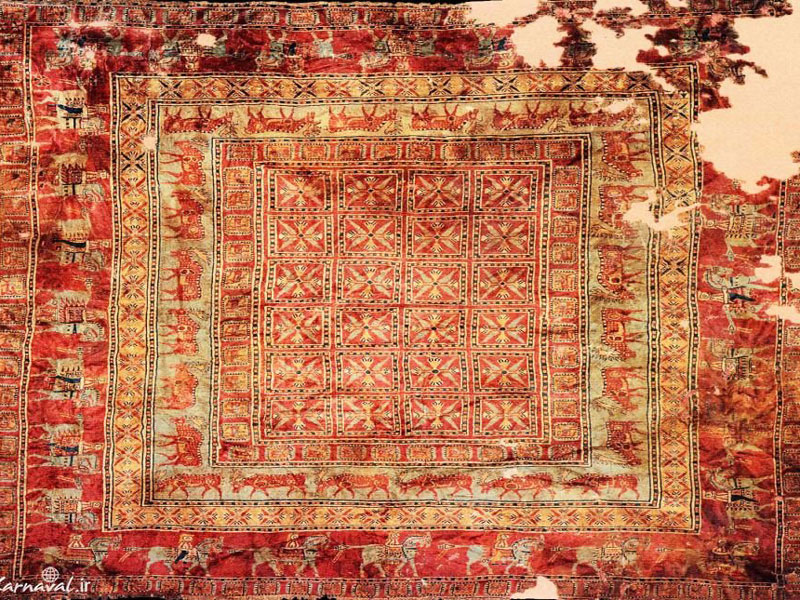The Pazyryk Carpet A Technical Discussion

The combination of low temperature and precipitation within the tomb subsequently froze the carpet and preserved it in a thick sheet of ice protecting it for twenty five centuries.
The pazyryk carpet a technical discussion. Detail of pazyryk border showing great technical skill and a sophisticated design. First page pdf 746 kb permissions. The pazyryk carpet alone includes horses griffins and deer. Its decoration is rich and varied.
One of the most remarkable finds was the pazyryk carpet. Bc now in the hermitage museum in st. Notes in the history of art 10 no. This high quality replica is produced by weavers working in northern afghanistan using natural dyes and handspun wool.
Very small in size a mere 8 cm square and in very damaged condition the bashadar fragment offers limited information but still enough to show substantial technical differences from the pazyryk carpet. This richly coloured carpet is 200 x 183 cm 6 6 x 6 0 and framed by a border of griffins. The pazyryk rug is one of the oldest carpets in the world dating around 5th c. Harald böhmer and jon thompson the pazyryk carpet.
It was excavated by sergei ivanovich rudenko in 1949 from a pazyryk burial mound in the altai mountains in siberia. A technical discussion source. The carpet was found in the pazyryk valley in siberia in the altai mountains. Today the pazyryk carpet is regularly reproduced by modern carpet weavers who find its design still has a magical appeal.
The earliest surviving pile carpet is the pazyryk carpet which dates from the 5th 4th century bc. To our knowledge it is the oldest piled rug still in existence and is housed at st. This somewhat ironic story is the reason that the pazyryk rug still exists today. The advanced technique used in the pazyryk carpet indicates a.
The central field is occupied by 24 cross shaped figures each. Although very old the weaving technique used on this carpet is very advanced and it shows a long tradition in carpet production. Rudenko attributed the bashadar find to the 6th century bc at least a century before pazyryk. The pazyryk carpet was excavated in 1949 from the grave of a scythian nobleman in the pazyryk valley of the altai mountains in siberia radiocarbon testing indicated that the pazyryk carpet was woven in the 5th century bc.
Petersburg russia the pazyryk rug was found in 1949 in the grave of a scythian nobleman in the bolshoy ulagan dry valley of the altai mountains in kazakhstan the pazyrk rug had been frozen in the ice and it was very well preserved. The museum s website description of this ancient rug is as follows. Excavated from the grave of a scythian nobleman the radiocarbon tests proved that the carpet was produced in the 5th century bc.
















































